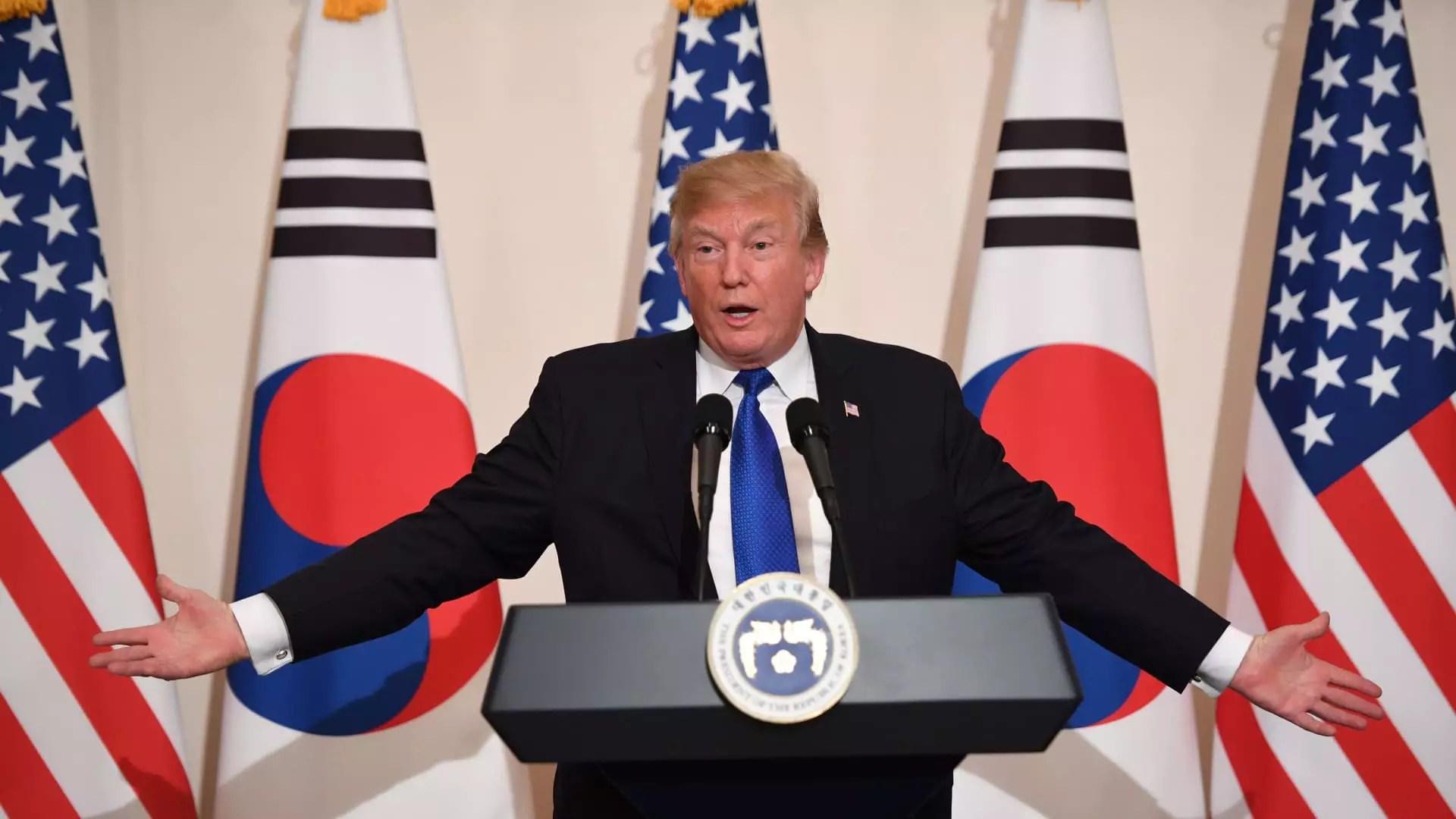When President Donald Trump heralded the latest trade deal with South Korea as “full and complete,” it’s essential to read between the lines—or better yet, question the narrative altogether. This phrasing, often used for political gain, masks the subtle compromises and strategic concessions that underpin such agreements. The touted reduction of tariffs from 25% to 15% on South Korean exports, especially automobiles, is presented as a victory for American industries. But a deeper analysis reveals that these concessions are more about strategic image than genuine economic fairness. Tariffs are blunt instruments; lowering them indicates a recognition of mutual benefit, yet it also highlights the concessions made by the U.S., reinforcing its dependency on South Korea’s exports rather than asserting dominance.
The tariffs reductions do little to address the underlying imbalance in trade. While U.S. officials trumpet the deal as a win, they neglect to acknowledge the broader implications for American workers and industries that have faced offshoring pressures for years. Instead, the narrative emphasizes a cooperative front, masking underlying vulnerabilities in the U.S. manufacturing sector that continue to be exploited in global supply chains. The idea of a “full” deal suggests completeness, but in reality, it often signifies a strategic compromise—trade-offs that favor maintaining influence over achieving equitable economic relations.
Returns on Investment or Political Posturing?
Central to this agreement is an eye-catching pledge from President Trump that South Korea will deposit $350 billion into U.S.-controlled investment ventures. While this sounds impressive, the substance behind the figure merits scrutiny. The claim that “90% of the profits” will go to Americans seems optimistic at best. Experience suggests that large sums allocated for investment tend to be filtered through complex financial channels, often benefiting multinational corporations more than the broader American populace.
Moreover, the emphasis on Korean investments in key industries like shipbuilding, semiconductors, batteries, biotech, and energy highlights the strategic importance of these sectors for both nations. Yet, it also raises concerns about the actual distribution of benefits. Are these investments genuinely an opportunity for American workers and smaller enterprises, or do they primarily serve as corporate windfalls with political embellishments? The narrative of mutual gains often overrides the reality of geopolitical leverage and corporate interests shaping these deals.
Furthermore, the harsh language used to describe the division of profits between countries—based on contribution—underscores the underlying power imbalance. Despite claims of fairness, the reality is that the economic influence of the U.S. remains significant, but increasingly challenged as other countries seek to carve out their own interests through complex negotiations and strategic investments.
The Geopolitical Chessboard: A Shift in Power Dynamics
The deal’s inclusion of a $100 billion energy purchase from the U.S. by South Korea illustrates the intertwined nature of economics and geopolitics. While the deal ostensibly fosters cooperation, it also signals a subtle shift in the regional balance of power, with South Korea recalibrating its diplomatic and economic priorities. Seoul’s insistence on balancing sovereignty (“diplomacy centered on national interest”) while engaging in these massive economic arrangements demonstrates the nuanced dance of modern diplomacy.
The suggestion that Seoul will continue to pursue a policy rooted in national interest complicates simplistic narratives of American dominance. While the agreement promises to boost U.S. exports and investments, it also compels South Korea to weigh its strategic interests carefully—an indication that bilateral ties are increasingly influenced by internal and external geopolitical considerations rather than pure economic benefits.
For the U.S., maintaining influence in East Asia amid rising China and resurgent Russia is vital. This deal, ostensibly about economics, doubles as a geopolitical strategy to reinforce alliances and deter regional rivals. Yet, the narrative often distracts from the superficiality of such deals—what appears as mutual benefit on paper often masks ongoing American reliance on foreign markets to sustain its own economic stability.
Ultimately, the agreement highlights the continuing tension between economic diplomacy and national sovereignty. While both nations project images of mutual benefit and strategic cooperation, the reality is that economic relations are becoming an arena for influence—where words like “full,” “complete,” and even “mutually beneficial” may serve more as political mantras than representative of equitable equality.

